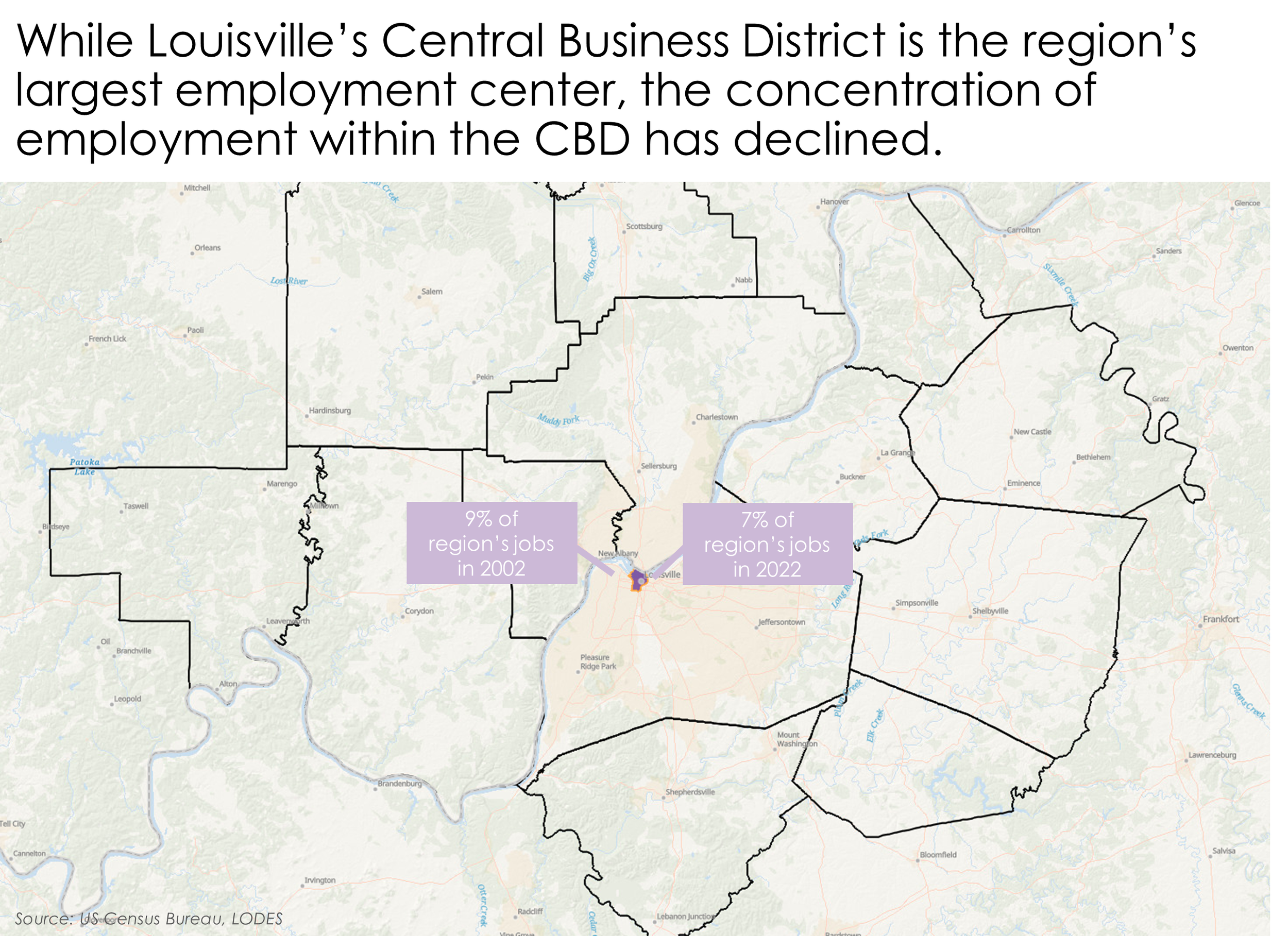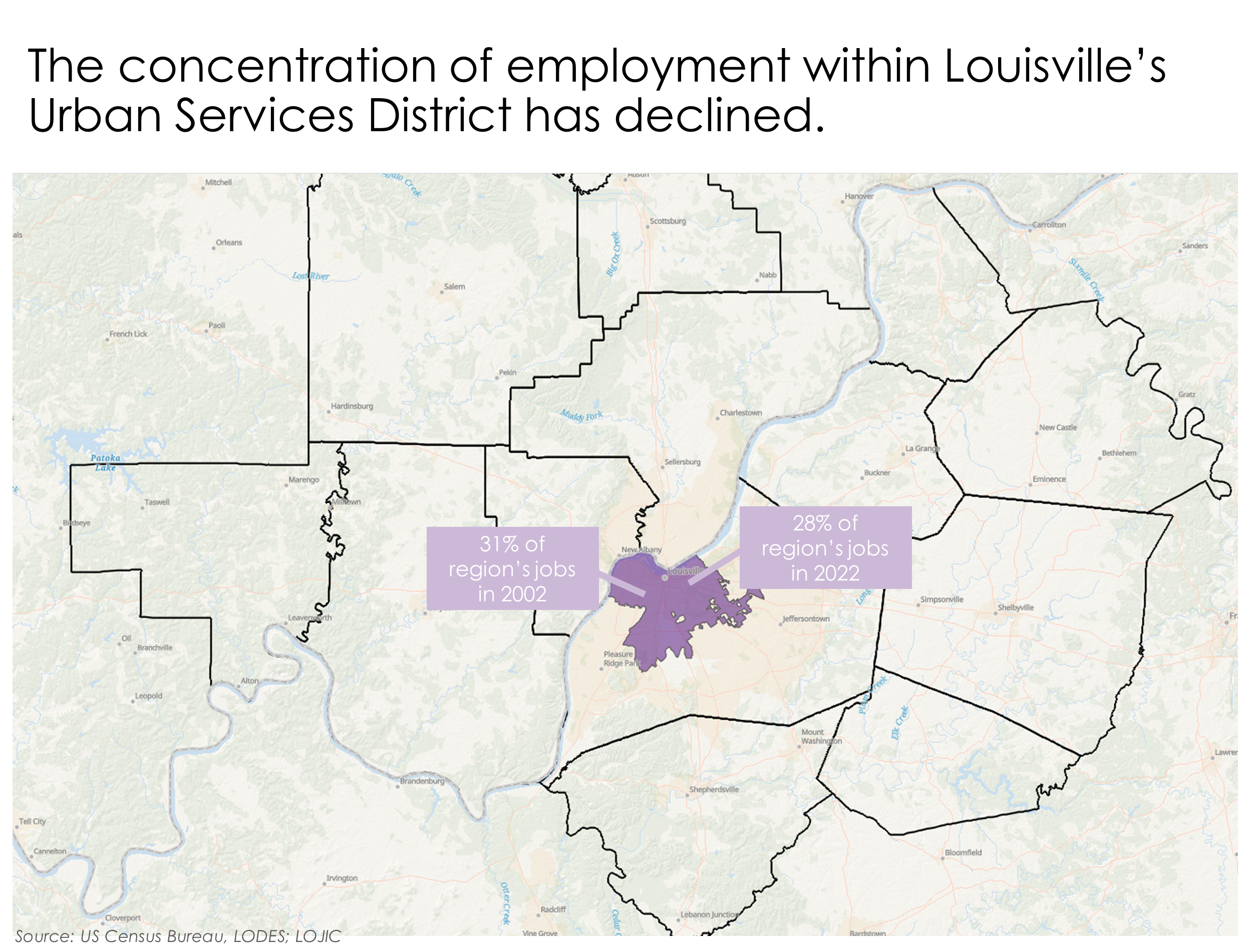A view of the region's job centers over the last 20 years
Job centers in the Kentuckiana region have grown and spread out over the last 20 years. Explore the interactive map below to see Kentuckiana’s jobs by location from 2002 through 2022.
In 2022, Jefferson County accounted for 73% of the region’s jobs, southern Indiana represented 17% of local jobs, and 10% were located in the regional counties in Kentucky. While Jefferson County is the location of the majority of the region’s jobs, this concentration has declined over the last 20 years in favor of employment growth in the region. In particular, Bullitt County has grown from accounting for 2% of the region’s jobs in 2002, to 5% in 2022.
Jobs within Jefferson County have also become more decentralized. Louisville’s central business district (CBD, bounded by 9th St to the west, York St to the south, I-65 to the east, and the river to the north) is the region’s largest job center. However, there were fewer jobs in Louisville’s CBD in 2022 over 2002, despite the county growing 17% in the overall volume of jobs. In 2002, Louisville’s CBD accounted for 9% of the region’s jobs, while in 2022 it accounted for 7%.
Jobs within Jefferson County’s Urban Services District (USD, the boundaries of the city of Louisville before city/county merger) have grown more slowly than jobs located outside of the I-264 beltway. The USD accounted for 31% of the region’s jobs in 2002, but only 28% in 2022.
In a region where jobs are continuing to spread out, having access to a reliable vehicle is a significant factor in economic success. IribaMaps shows how some large job centers are outright inaccessible by bus, and most others require a one-way commute of an hour. Meanwhile, the latest American Community Survey reported that over 38,000 regional households have no vehicle available, and 64% of these households, more than 24,000, are headed by an adult under age 65.
Recognizing the need for external support such as transportation can be a powerful component of a quality job. Masonic Homes Kentucky, the first recipient of KentuckianaWorks’ Workforce Investor Badge, surveyed its frontline workforce and found reports of transportation issues among its staff. Located within Louisville’s USD and near four bus lines, Masonic Homes was able to leverage the public transit system to provide transportation services for their workers. Employers located outside Louisville’s USD are less likely to be able to lean on public transportation as a viable option.
Technical note:
The data in this post comes from the US Census Bureau’s LEHD Origin-Destination Employment Statistics (LODES) version 8.
For LODES, a place of work is defined by the physical or mailing address reported by employers in the QCEW (formerly ES-202) or Multiple Worksite Reports. An address from administrative data may or may not be the actual location that a worker reports to most often. The distinction of worksite and administrative address may be especially significant in some industries such as construction, where work is often carried out at temporary locations. In some cases, employers do not provide a multiple worksite report when it would be appropriate to do so. Nonreporting of multiple worksites is especially common with state and local governments and school districts. In such a case, LEHD infrastructure files assign all workers for that employer (within the state) to the main address provided. Bureau of Labor Statistics (BLS) data show a national noncompliance rate of 5.61 percent of multiunit employers responsible for about 4.45 percent of multiunit employment. Source: (Graham, Kutzbach, & McKenzie, 2014)




